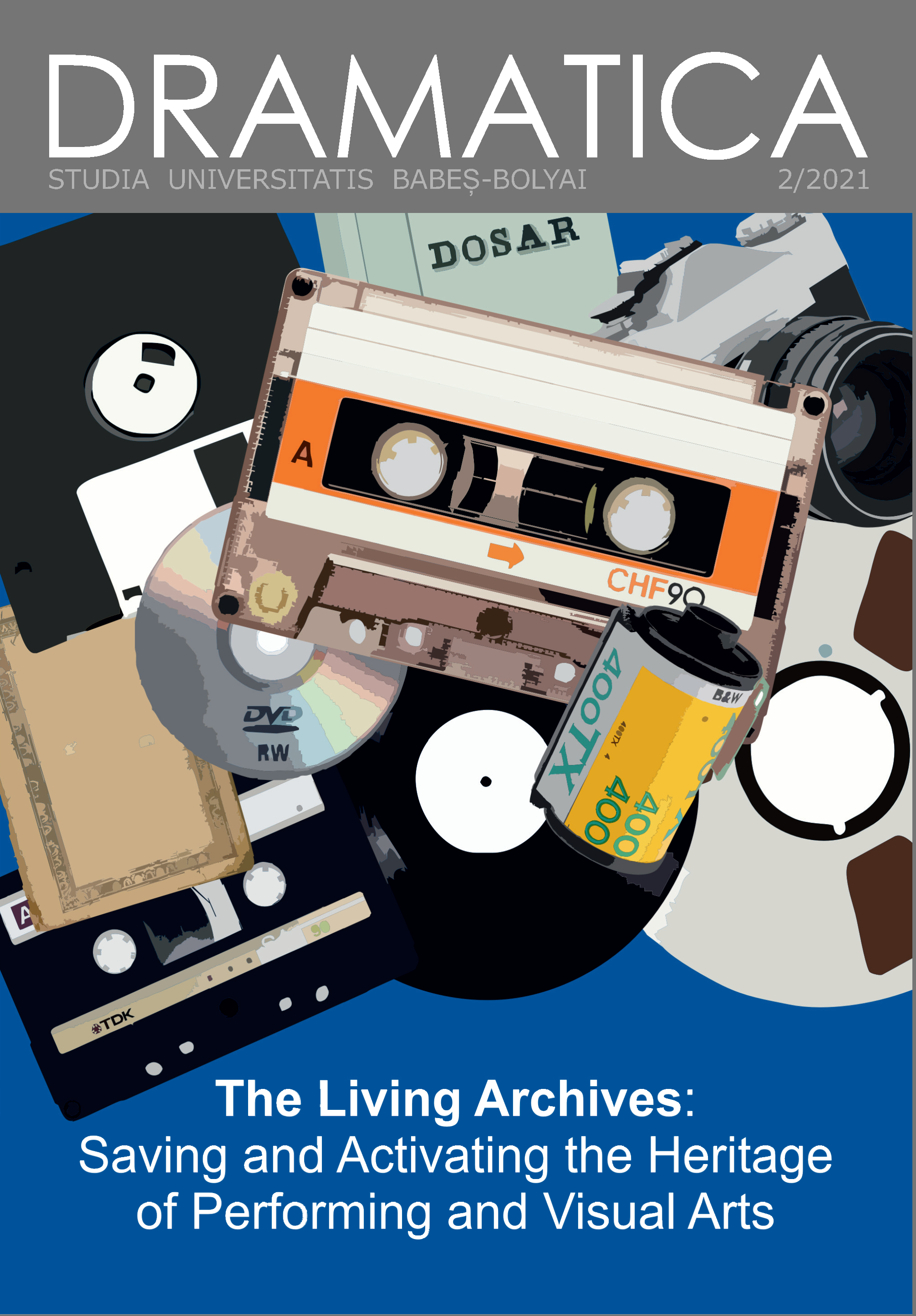The Body’s Memory Archives in the Process of Generating an Aesthetic Movement and `Flow Experiences` for the Audience in the Production of the Performance tXc -TOXIC (after F. Richter’s play Rausch)
DOI:
https://doi.org/10.24193/subbdrama.2021.2.12Keywords:
(Non-toxic) body archives, aesthetic experience, embodiment, dance, performanceAbstract
The present enquiry is particularly interested in the performer’s body archiving memory while generating poetic movement on stage. The main site of investigation is a theatre-dance performance and the work engaged by the performers of tXc-TOXIC (after the Falk Richter’s play Rausch, an Insula Creative Hub production, directed by Cristian Grosu, choreographed and co-directed by me). The focal point of my argument is that, with proper and sustained body training, performers can easily incite and produce aesthetic movement after engaging the CI (contact improvisation) means of accessing movement and body memory.References
Fuchs, Thomas. “Chapter 1. The Phenomenology of Body Memory.” In Advances in Consciousness Research, edited by Sabine C. Koch, Thomas Fuchs, Michela Summa, and Cornelia Müller, 84:9–22. Amsterdam: John Benjamins Publishing Company, 2012. https://doi.org/10.1075/aicr.84.03fuc.
Katan, Einav. Embodied Philosophy in Dance: Gaga and Ohad Naharin’s Movement Research. Performance Philosophy. London: Palgrave Macmillan, 2016.
Massumi, Brian. Parables for the Virtual Movement, Affect, Sensation. Durham: Duke University Press, 2021. http://public.eblib.com/choice/PublicFullRecord.aspx?p=6688376.
———. “The Thinking-Feeling of What Happens.” Inflexions 1 (May 2008).
Massumi, Brian, Jacob Ferrington, Alina Hechler, and Jannell Parsons. “Affect and Immediation: An Interview with Brian Massumi.” DisClosure: A Journal of Social Theory 28, no. 1 (December 1, 2019). https://doi.org/10.13023/disclosure.28.09.
Riva, Giuseppe. “The Neuroscience of Body Memory: From the Self through the Space to the Others.” Cortex 104 (July 2018): 241–60. https://doi.org/10.1016/j.cortex.2017.07.013.
Shibolet, Yotam. “Bodyminds in Movement: Embodied Cognition in the Practice and Discourse of Contact Improvisation.” Junctions: Graduate Journal of the Humanities 3, no. 1 (March 1, 2018): 72. https://doi.org/10.33391/jgjh.8.
Toxic after F. Richter with Paula Trifu & Dragoș Maxim Galbăn, directed by Cristian Grosu & Raluca Lupan, choreographed by Raluca Lupan, Visual Design by Cătălina Gherda, Sound & Light Design: Victor Lup, produced by Insula Creative Hub™, Accessed link at 12.07.2021, https://insulacreativehub.com/portfolio-items/toxic/.
Downloads
Published
How to Cite
Issue
Section
License
Copyright (c) 2021 Studia Universitatis Babeș-Bolyai Dramatica

This work is licensed under a Creative Commons Attribution-NonCommercial-NoDerivatives 4.0 International License.


